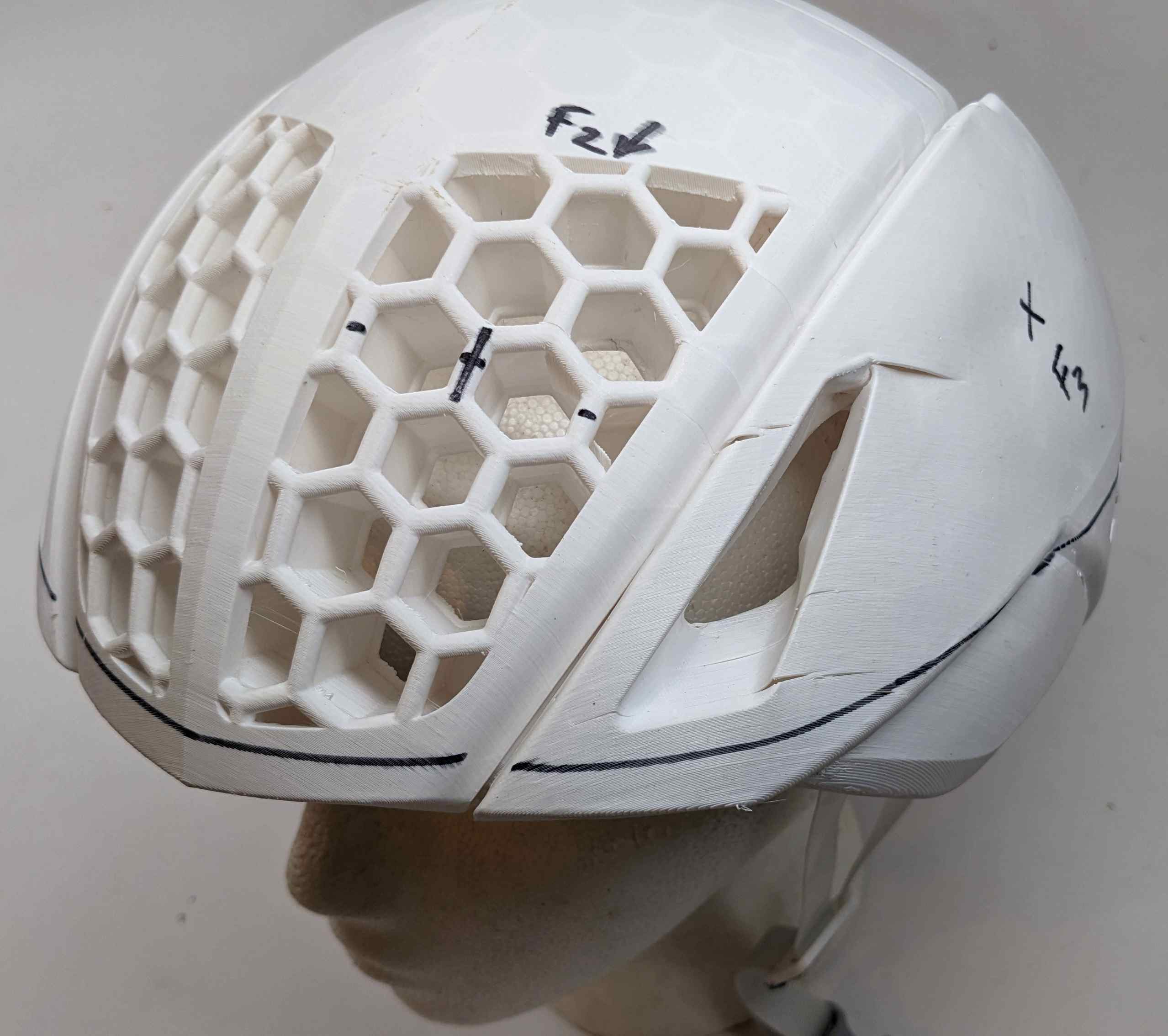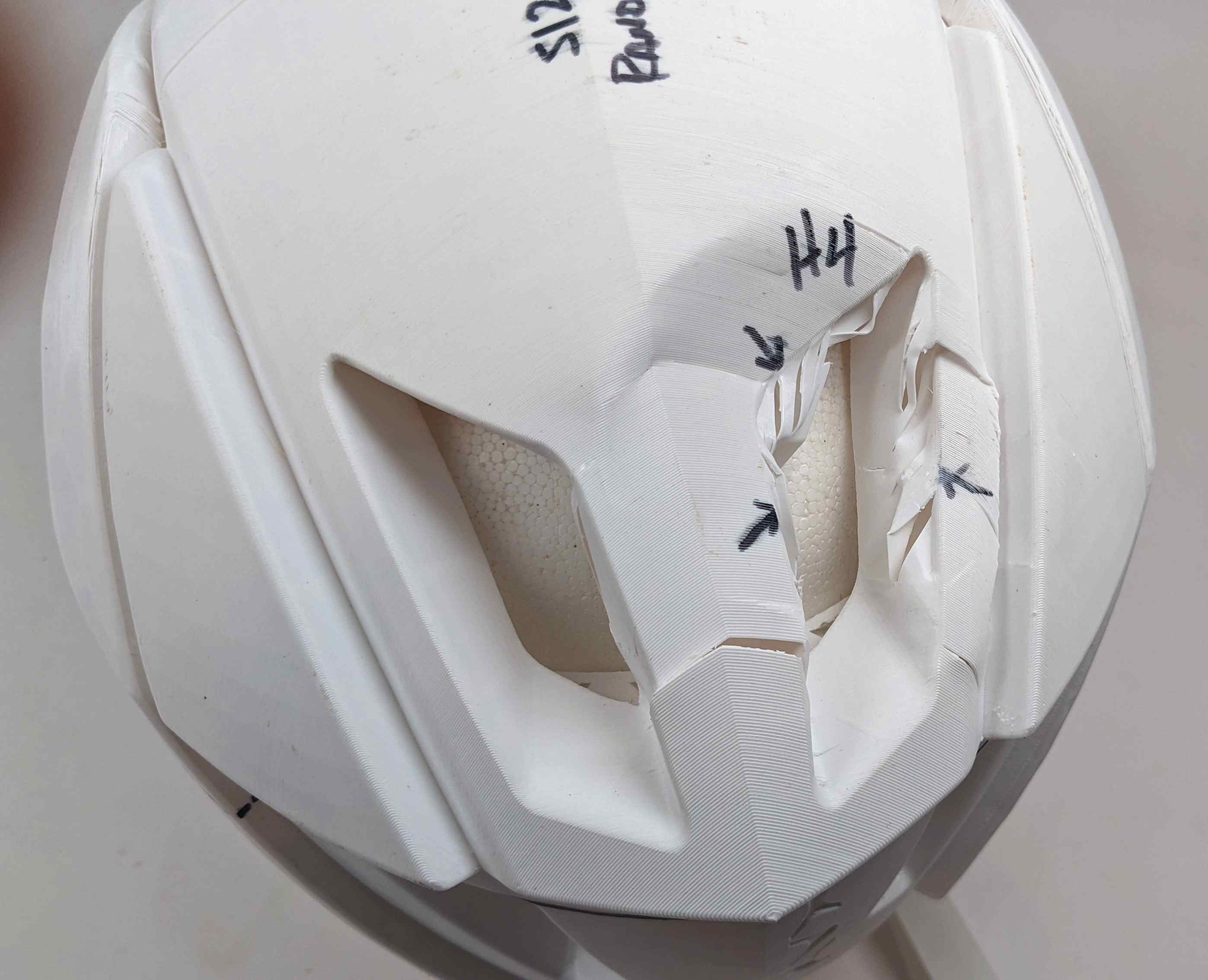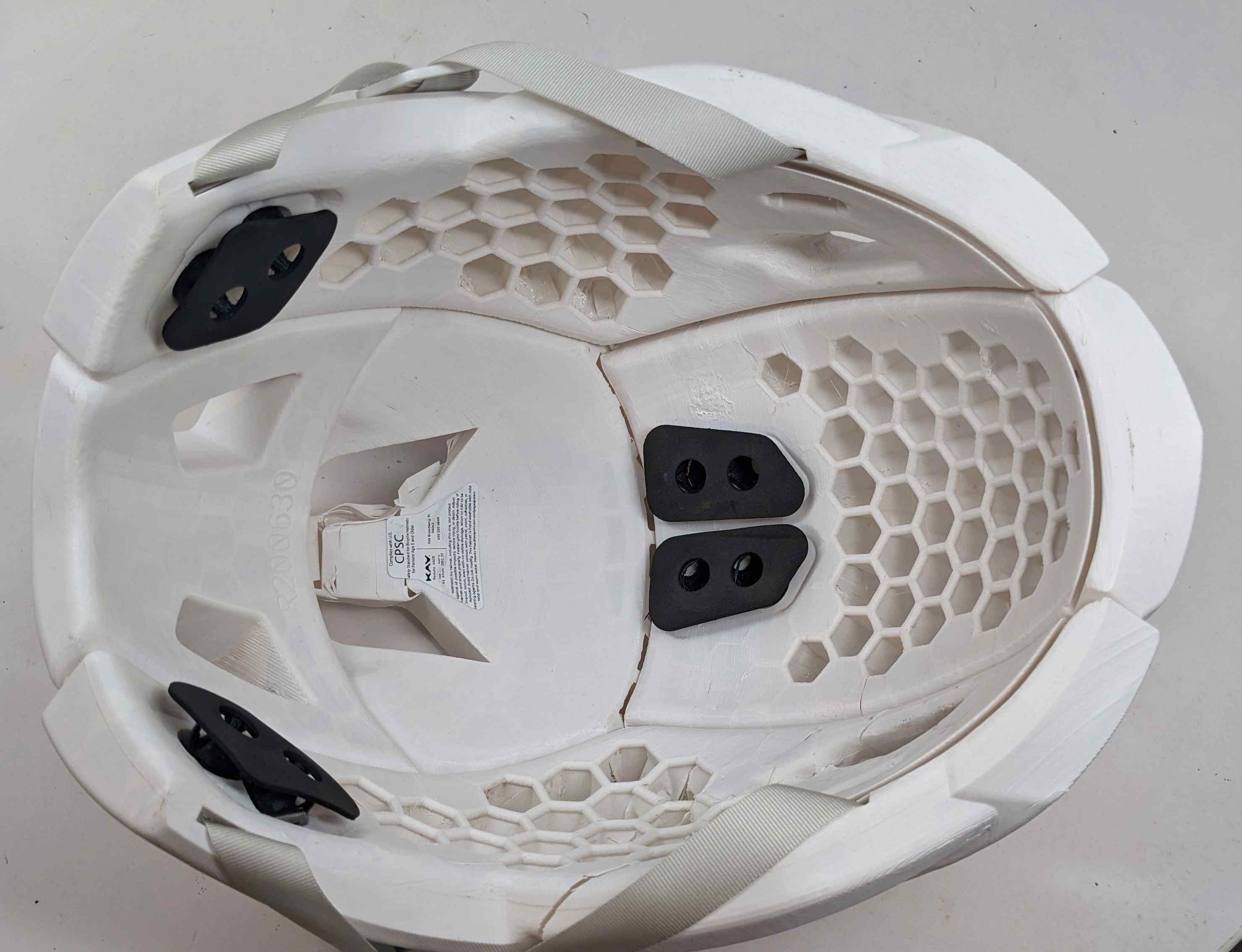3D Printed Helmets
Summary: We are aware of only two manufacturers who are currently marketing 3D printed helmets. We expect more eventually, since additive manufacturing has some advantages. It permits custom helmet fitting for unusual heads.
The manufacturers of 3D printed helmets we are aware of are:
Kav Helmets
KAV began selling custom-fitted helmets in 2022 They use 3D printing to produce a custom helmet generated from your individual head measurements. They send you a kit with calipers and a measuring tape, then a staffer does a Zoom interview where they guide you through the process of measuring your head. They generate a custom "cap" from the measurements and adjust as necessary before producing the final helmet. The printers use "proprietary carbon fiber-reinforced copolymers" and KAV says the liner handles rotational energy by shearing sideways when needed, so it does not need MIPS.
We sent the original KAV model to a test lab and the results were impressive. The lab tested at the lower level impact we are trying to have added to the ASTM bicycle helmet standard and the results were on a par with the best EPS foam helmets the ASTM task group has tested. Considering the rigidity of the printed honeycomb that was very reassuring. The lower velocity tests represent the level of impact in a typical bike crash. At higher level drops required to meet the CPSC standard the KAV's performance was still excellent. We did not have the lab test against the curbstone anvil, but on the flat and hemispherical (grapefruit-sized) anvils in CPSC-level impacts the helmet held together well. All of the tests were at ambient temperature, the most common condition for crashing. Here are some post-testing photos of the helmet to show how well it held together:

After impact on flat anvil at lower impact level (marked F2) and full CPSC drop height (marked F3)

After impact on hemispheric (grapefruit-sized) anvil at full CPSC drop height (H4).
Material cracking is important to managing energy of the impact.

Interior after testing. Helmet segments held together well.
KAV says their newest Nova model has softer honeycomb in the inner layer to reduce g's in lesser impacts further and allow more sideways shear to reduce rotational energy. We have ordered one and will post a summary of lab test results when we have them.
KAV's helmets are heavier than EPS foam helmets. When you pick one up that is the first impression. But a good portion of the weight is below the center of gravity of the head, and Army research on combat helmets has showed keeping weight lower improves the wearer's perception of how heavy a helmet is on the head.
The current models are the Portola: Kaze at $225 or the Nova at $300 direct from the manufacturer. KAV prints their helmets in California.
HexR Helmets
HEXR is a UK producer who began shipping helmets in 2019. They produce custom helmets with a 3D printed liner of hexagonal honeycomb cells that crush on impact. The interior liner is custom made for the wearer's head, using data from a head scan done with an iPad. Scans can currently be done by HEXR if you are in London. In 2020 they have introduced a process using your iPhone that can be done at home if you have access to "devices supporting iOS 13 onwards (iPhone 6S and newer)."

 HEXR claims their helmet provides better energy management than
a foam helmet, but cites only one European standard lab test with linear impact results at an average of 144g, a level
that is good but can be attained with a good standard thick EPS foam liner. For tangential impact they have an amalgam of test data on their site with a
chart they have pieced together showing great performance in oblique impacts, citing testing at the University of
Strasbourg. In July 2021 we did not find any data on the HEXR on
the University of Strasbourg's CERTIMOOV site, but HEXR has a link to the test report for
their helmet. HEXR also cites data from the Swedish Folksam published 2019
tests.
HEXR claims their helmet provides better energy management than
a foam helmet, but cites only one European standard lab test with linear impact results at an average of 144g, a level
that is good but can be attained with a good standard thick EPS foam liner. For tangential impact they have an amalgam of test data on their site with a
chart they have pieced together showing great performance in oblique impacts, citing testing at the University of
Strasbourg. In July 2021 we did not find any data on the HEXR on
the University of Strasbourg's CERTIMOOV site, but HEXR has a link to the test report for
their helmet. HEXR also cites data from the Swedish Folksam published 2019
tests.HEXR says their shell is designed to pop off in an impact to improve the response to angular forces. We consider that very poor design for a helmet that often has to perform in dual impacts with a car, then the pavement. If the shell is missing after the first impact the performance of the helmet is in question, and there are no test data presented for that scenario.
When HEXR produces a CPSC model they can submit it to Virginia Tech for oblique impact protection ranking by Tech's star system.
In theory, a custom helmet can use all of the available space between your head and the inside of the shell for energy-management liner, so this technique could be the future of high-end helmets. For football, Ridell has a Precision model football helmet that is made with 3d printing to individual head shapes. For uniquely shaped heads that alone could be a big advance. HEXR is receiving many inquiries from riders with exceptionally large heads, whose varying head shapes often contribute to the size problem. And those with cochlear implants will not be far behind.
The outer shell detaches from the liner. An inner fit system is provided for those who want it, but may not be necessary.
The materials in the helmet liner are made from castor bean oil, a sustainable product. The shell is unspecified, but is probably a petroleum-based plastic.
This helmet might be useful for riders with unusual head shapes and sizes. We don't know what the maximum and minimum sizes would be. There is no model for children.
The HEXR is certified to the European EN1078 standard, so will not be available in the US market until a CPSC-certified model is developed, planned for later in 2020.
The HEXR sells for £300, including the head scan. For comparison, the only custom 3d printed football helmet currently on the market sells for $1700. HEXR has a 100% crash replacement guarantee for the first year for crashed helmets.
The easily-managed head scan raises the possibility that manufacturers of conventional off-the-shelf helmets could match individual head scans done at home or in a shop with the interior dimensions of their helmets to provide best fit recommendations at a fraction of the price of a custom helmet. For those who must buy online that could be a big advance.
Back to the top
Back to the Home Page